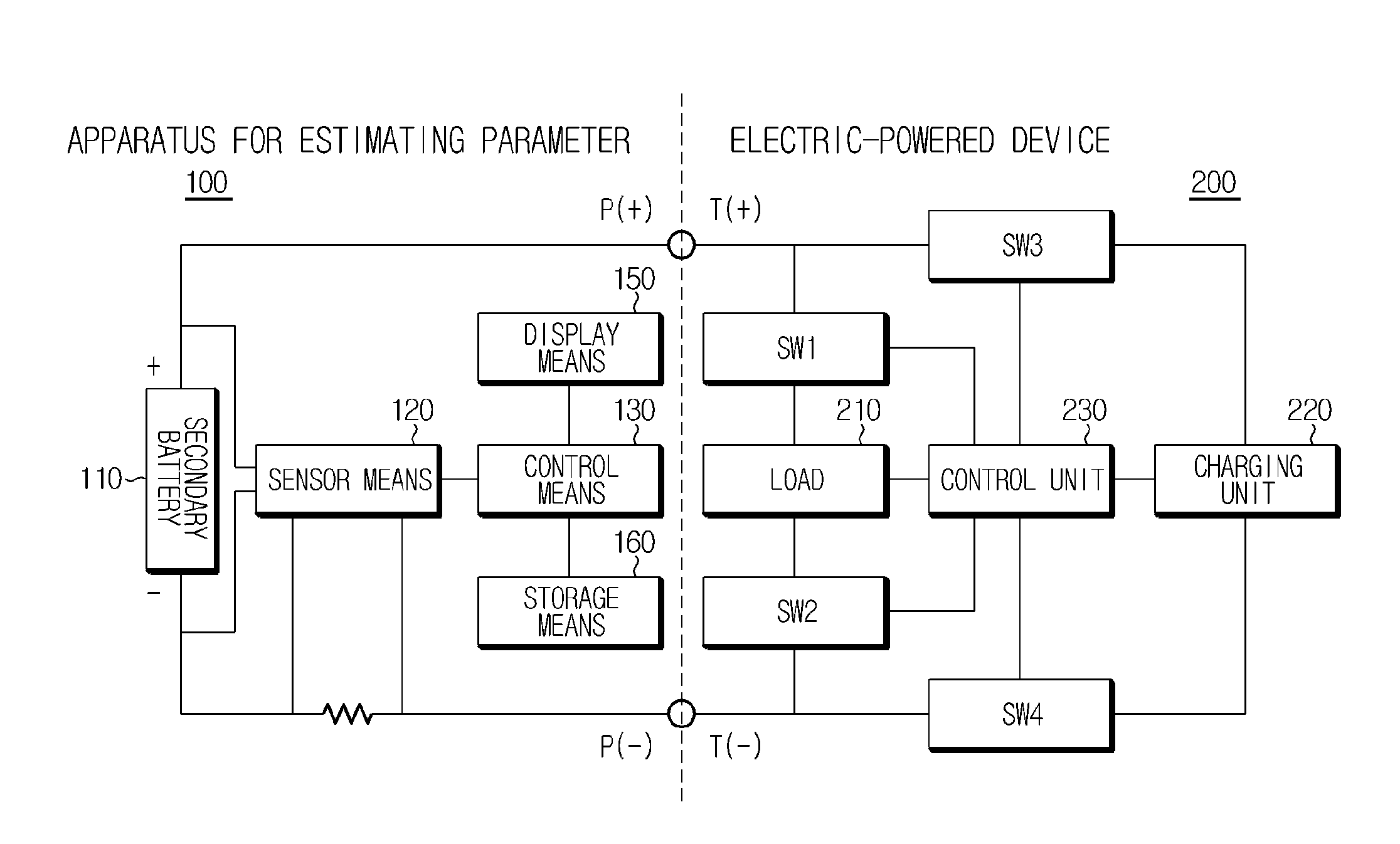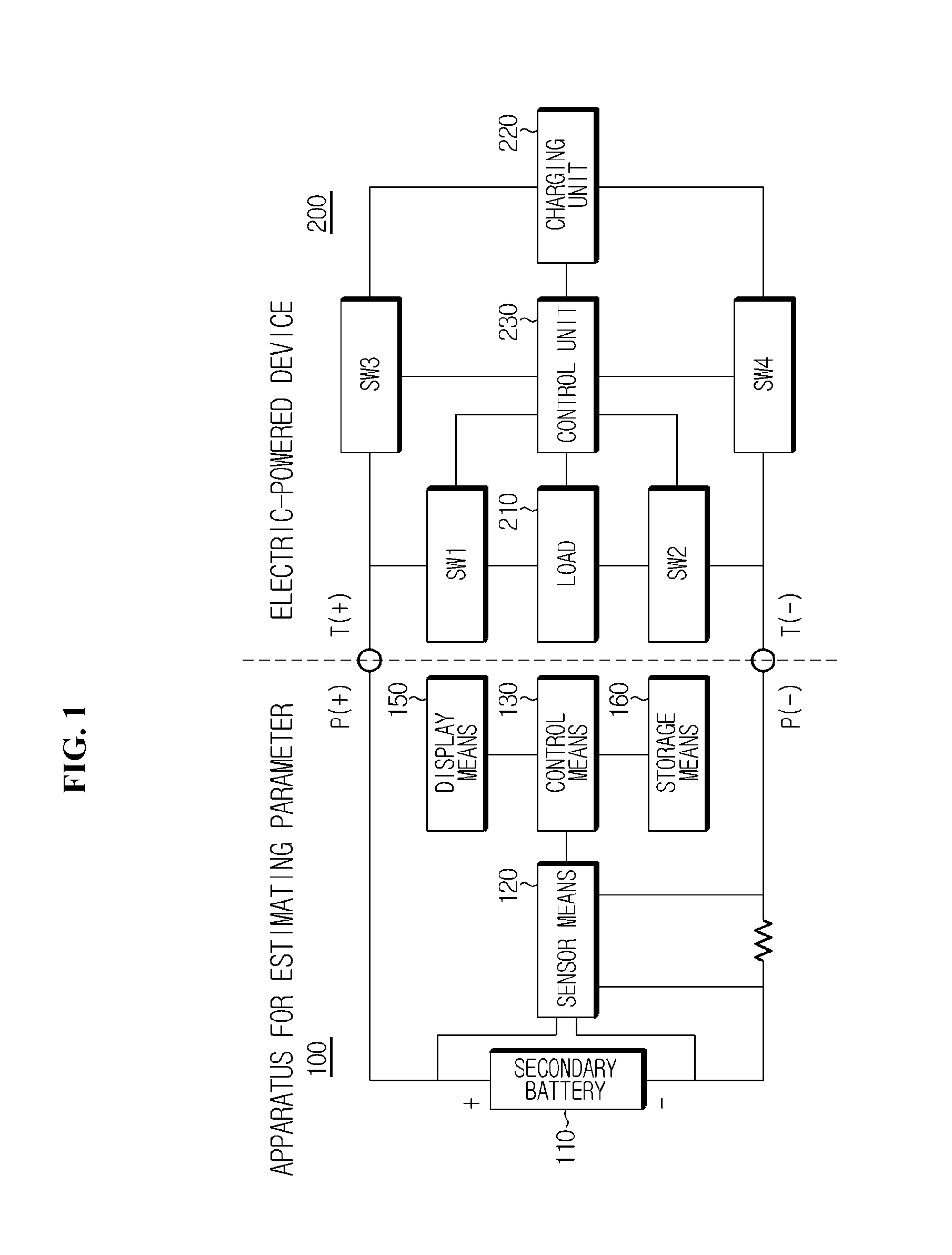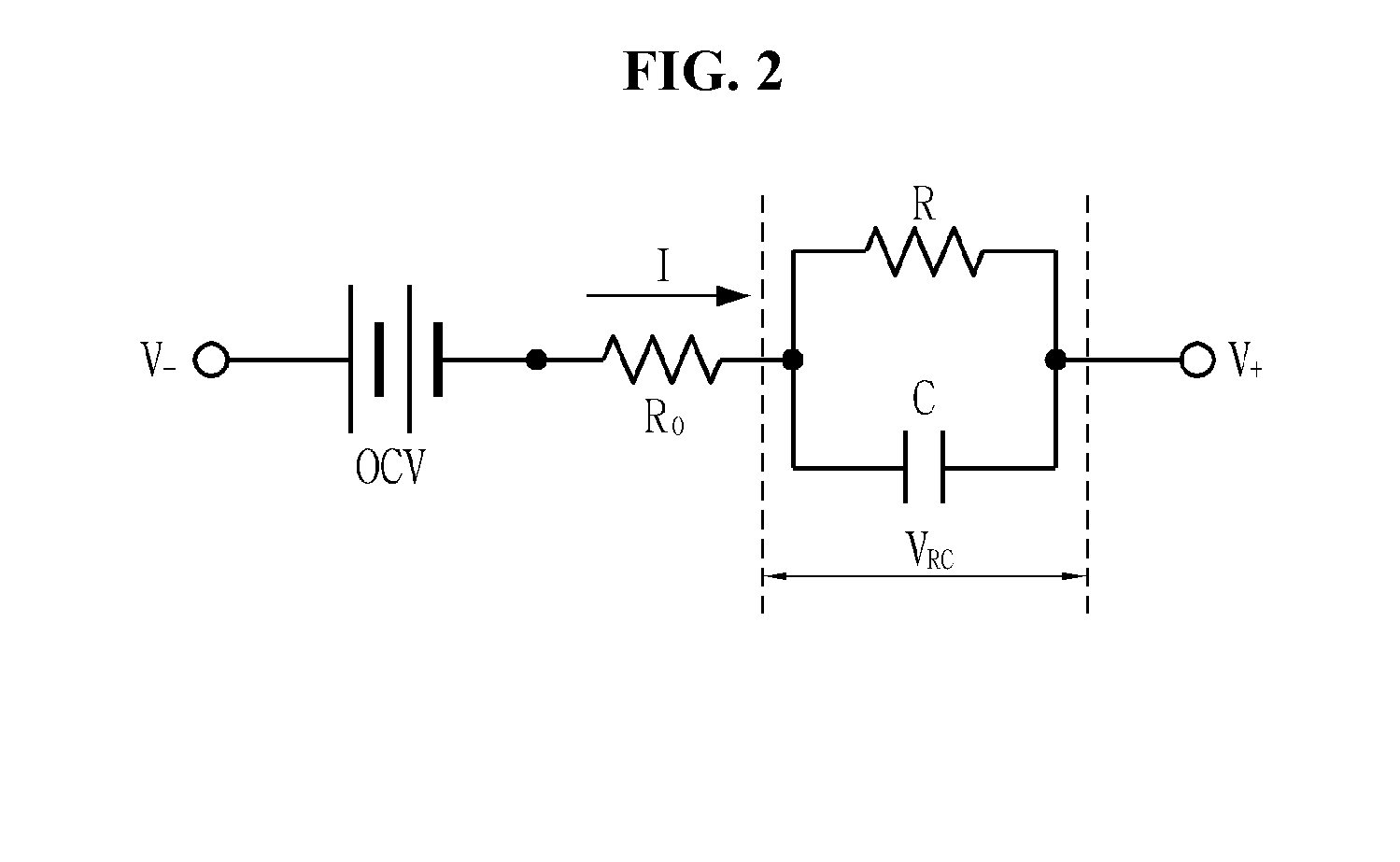Apparatus and method for estimating parameter of secondary battery
a secondary battery and parameter estimation technology, applied in battery/fuel cell control arrangement, cell components, instruments, etc., can solve the problems of complex calculation, limited ability to meet all industrial performance standards with only one cathode material, and inability to measure the ocv of a secondary battery during charging or discharging of the secondary battery, etc., to achieve accurate estimation, improve reliability of estimated parameters, and reliable estimation of ocv and/or soc
- Summary
- Abstract
- Description
- Claims
- Application Information
AI Technical Summary
Benefits of technology
Problems solved by technology
Method used
Image
Examples
experiment example 1
Fabrication of Secondary Battery
[0189]A secondary battery including a single cathode material was fabricated in accordance with the following specification.[0190]Cathode material: LiCo1 / 3Ni1 / 3M1 / 3O2 [0191]Anode material: Graphite[0192]Electrolyte: LiPF6 added to a mixed solvent of EC(Ethyl Carbonate) / DMC(DiMethyl Carbonate) / EMC(EthylMethyl Carbonate) mixed at a weight ratio of 3:4:3[0193]Separator: Porous polyolefin film coated with inorganic particles on both surfaces[0194]Casing: Pouch casing
[0195]Charge / Discharge Experiment
[0196]FIG. 5 is a graph illustrating measurements of a charging / discharging current profile and a voltage change of a secondary battery.
[0197]The charging / discharging current profile simulates a driving pattern in Los Angeles used as vehicle testing standards in the U.S. hybrid vehicle industry under the assumption that the secondary battery is used in a hybrid vehicle.
[0198]In the charging / discharging current profile, a section A is a period during which the s...
experiment example 2
Fabrication of Secondary Battery
[0200]A secondary battery including a blended cathode material was fabricated in accordance with the following specification.[0201]Cathode material: Blended cathode material of LiCo1 / 3Ni1 / 3Mn1 / 3O2 and LiFePO4 at a weight ratio of 7:3[0202]Anode material: Graphite[0203]Electrolyte: LiPF6 added to a mixed solvent of EC / DMC / EMC mixed at a weight ratio of 3:4:3[0204]Separator: Porous polyolefin film coated with inorganic particles on both surfaces[0205]Casing: Pouch casing
[0206]Observation of Characteristics of Secondary Battery
[0207]During charging of the secondary battery, lithium ions deintercalated from the cathode material are intercalated into the anode material. However, LiCo1 / 3Ni1 / 3Mn1 / 3O2 and LiFePO4 differ in concentration at which lithium ions are deintercalated as a charging voltage of the secondary battery changes. That is, for a low voltage charging period, lithium ions are deintercalated from LiFePO4, and for a high voltage charging period,...
experiment example 3
[0223]In this experiment, a difference between an estimated SOC of the secondary battery fabricated in Experiment example 1 using the present disclosure and an actually measured SOC of the secondary battery was measured.
[0224]FIG. 12 is a graph illustrating two current-voltage data (extrapolation data) used when calculating a linear approximation equation, indicated on a current-voltage profile. One is data measured when a magnitude of a charging current decreases from a peak value to 15 A, and the other is data measured when a magnitude of an electric current decreases from a peak value to 5 A. The current-voltage data constituting the extrapolation data is all data measured when the magnitude of the charging current decreases to ⅓ (20 ampere) or less, based on the peak value (65 ampere).
[0225]FIG. 13 is a graph illustrating a concept of estimating a Y intercept as an OCV of a secondary battery when calculating a linear approximation equation using two current-voltage data.
[0226]FI...
PUM
| Property | Measurement | Unit |
|---|---|---|
| current-voltage | aaaaa | aaaaa |
| charging current | aaaaa | aaaaa |
| current | aaaaa | aaaaa |
Abstract
Description
Claims
Application Information
 Login to View More
Login to View More - R&D
- Intellectual Property
- Life Sciences
- Materials
- Tech Scout
- Unparalleled Data Quality
- Higher Quality Content
- 60% Fewer Hallucinations
Browse by: Latest US Patents, China's latest patents, Technical Efficacy Thesaurus, Application Domain, Technology Topic, Popular Technical Reports.
© 2025 PatSnap. All rights reserved.Legal|Privacy policy|Modern Slavery Act Transparency Statement|Sitemap|About US| Contact US: help@patsnap.com



